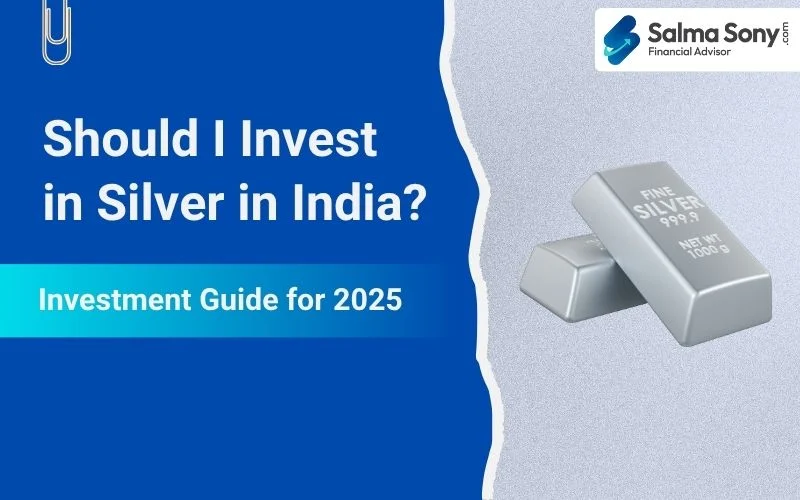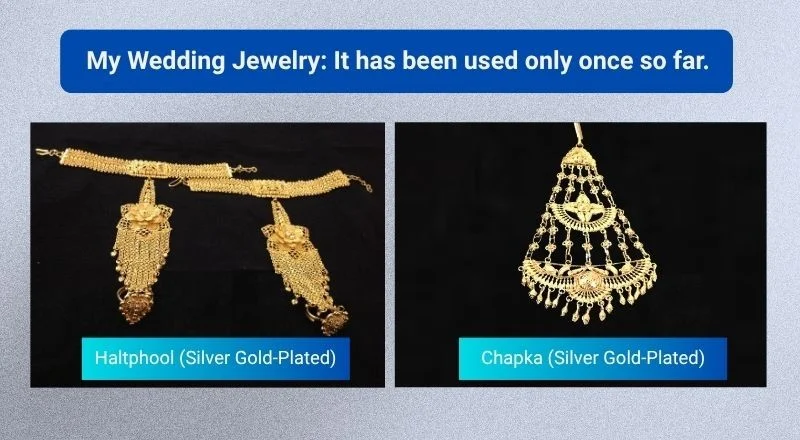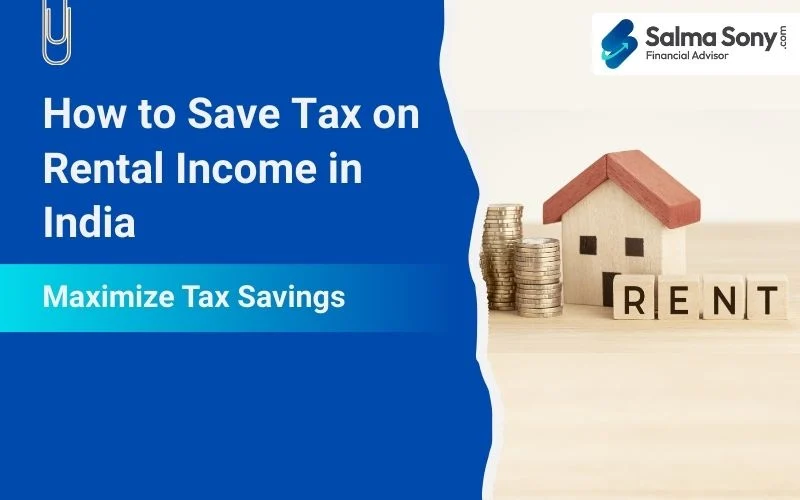If you’ve ever wondered should I invest in silver, and whether investing in silver makes sense, you’re not alone. Many of my clients ask this question, especially when the news talks about the price of silver shooting up and gold seems expensive.
As SEBI-registered financial advisor, I guide beginners and high-net-worth individuals (HNIs) in creating goal-based financial plans. With my 15+ years of experience in the field of personal finance, I can say silver is not required for long-term goals like retirement, a child’s higher education, or a house purchase. However, it should be okay to take a little exposure as a part of your wealth creation portfolio, especially considering its demand in industries like solar, automobiles, etc. In this article, I will cover silver’s performance, prospects, and portfolio potential. Let’s begin.

What is Silver Investment?
When we talk about investing in silver, we’re basically talking about buying silver as an investment asset – not jewelry for Diwali, a silver plate for the temple, or gifting in marriages, but a real investment that could grow in value over time.
In India, you’ve got a few ways to do that:
1. Physical Silver
I have a few clients, including my parents, who love holding silver coins — it feels tangible. If you go this route, ensure that you buy physical silver that is BIS hallmarked and 99.9% pure.
How about silver jewelry? It’s beautiful, in fact, it can be used with gold-plated if you want to wear any specific jewelry that you know will use it once in your lifetime (I did the same with one of my marriage jewelry (hathphool & chapka) as I didn’t like parents spending a lot just for one use and make it affordable (pics given below), but it’s not great for investment because of the making charges and resale value; probably you may want to keep it because of an emotional connection.

2. Digital Silver
About digital silver, you may feel it’s fine to get started with digital gold, your investing journey, as you can begin with as little as ₹100 on platforms like MMTC-PAMP. It is stored safely in vaults, so you don’t have to worry about theft or storage. However, there is a catch- digital silver is not regulated by any financial authority such as SEBI (Securities and Exchange Board of India), RBI (Reserve Bank of India), hence there is a risk. It is important to invest in a regulated investment to ensure peace of mind in the long run.
3. Silver ETFs & Mutual Funds
I usually recommend this to clients who want exposure to silver without the hassle. Silver ETFs (and mutual funds that invest in silver) are traded on the stock exchange, regulated, and transparent.
Historical Performance: 25-Year Lookback
Silver’s historical performance over the past two decades can give you a sense of how silver is performing. Although investing based on past data is not the right approach, you do get a sense of it.
Here’s a quick look at how silver has performed over time from 2006 to 2025:
• 19.5-year CAGR (2006-2025): 6.12%
• 10-year CAGR (2015-2025): 11.28%
• 5-year CAGR (2020-2025): 14.26%
• 3-year CAGR (2022-2025): 35.08%
• 1-year Return (2024-2025): 43.62%
If you observe closely, you will see the volatility coupled with substantial long-term gains.
Silver Growth in India (2000–2025)
Over the past 25 years, silver has risen more than 700% in India. The silver performance has beaten the inflation including traditional bank deposits, proving that silver is a reliable store of value for patient investors; this sounds impressive, but remember — it was a roller coaster ride with high volatility, meaning it jumps fast but also falls fast.
- Silver CAGR: ~10.8%
- Gold CAGR: ~10.9%
Gold wins on consistency, but silver’s highs have been volatile. So, if you are interested in investing in silver, be ready to accept volatility.
Commodity Silver vs. Gold: A Comparative View to Invest Wisely
| Metal Type | Silver | Gold |
|---|---|---|
| Price per 10g | ₹1,549 – ₹1,699 | ₹115,150 – ₹125,710 |
| CAGR (2000–2025) | ~10.8% | ~10.9% |
| Volatility | High | Low |
| Industrial Usage | ~59% of demand | 10 – 11% of demand |
| Inflation Hedge | Effective but inconsistent | Reliable |
| Liquidity in India | Moderate to Good | Very High |
| Govt Bonds Available | No | Yes (SGBs) |
Related: Mutual Fund Performance: Rolling Returns Vs Trailing Returns
Economic Cycles and Silver’s Behavior
Silver shines brightest when the world economy is a bit shaky — high inflation, weak currencies, global uncertainties. That’s when people rush to hard assets. But here’s the catch: when industrial demand slows (like in recessions), silver can drop faster than gold.
Industrial Demand: The Hidden Growth Story
Now, let’s talk about silver demand in 2025. Here is something not everyone talks about, that more than half of silver demand now comes from industry and we saw in the above table it’s 59% demand which consists industry like solar, electronics EVs, and even medical.
1. Solar Energy
Silver is a key component of solar panels. With India’s push toward renewable energy, silver demand is set to rise sharply.
2. Electric Vehicles (EVs)
Each EV uses silver in wiring and electronics. As EV adoption grows, so will the demand for silver.
3. Consumer Electronics & 5G Infrastructure
The use of silver from mobile chips, artificial intelligence systems, and 5G components continues to boost the demand for silver.
4. Medical applications
The use of silver in healthcare products is due to its antimicrobial properties. With people becoming more health-conscious, the demand for healthcare products will surely increase, so the demand for silver will also increase.
Global Demand Snapshot
Research published in the journal Resources Policy indicates that the 2030 supply may meet only 62-70% of demand, which is projected at 48,000-54,000 tons per year. The solar industry alone is expected to account for 15-20% of annual silver production by 2030. The supply and demand for silver remain exceptionally tight, which could support prices in the long run.
Source: sciencedirect
Silver Taxation in India
Let’s understand the tax implications of silver, which is crucial for calculating real returns on silver investments.
1. Physical Silver Taxation
(a) Goods and Services Tax (GST):
- 3% GST applies to the purchase of silver coins and bars.
- 3% GST applies on purchase plus on making charges for jewelry and articles (idols, utensils, artefacts).
(b) Capital Gains Tax:
Short-Term Capital Gains (STCG):
- Applicable only if you sell the silver within 24 months of purchase
- Capital gain is taxed at your income tax slab rate
- Example: You made a profit (capital gain) of ₹50,000 on silver held for less than or equal to 2 years, the profit will be added to your income and taxed based on your tax slab.
Long-Term Capital Gains (LTCG):
- Applicable only if you sell the silver after holding more than 24 months
- For purchases on or after July 23, 2024: Taxed at flat 12.5%
- For purchases before July 23, 2024: Taxed at 20% with indexation benefit
2. Silver ETF / Mutual Fund Taxation
(a) Goods and Services Tax (GST):
GST is exempt, which means GST is not applicable on the purchase of Silver ETF / Mutual Fund.
(b) Capital Gains Tax:
The Union Budget 2024 brought a big change. Let’s look at taxation effective July 23, 2024.
Short-Term Capital Gains:
- Silver ETFs / Mutual Fund held for 12 months or less: The capital gain tax is applicable at your income tax slab rate.
- Previously taxed at slab rates
Long-Term Capital Gains:
- Silver ETFs/ Mutual Fund held for more than 12 months: Taxed at 12.5% (plus surcharge and cess).
- No indexation benefit under new rules
Example Calculation:
If you have invested ₹1,00,000 in Silver ETF and are redeeming after 12 months or more at ₹1,30,000:
Capital Gain: ₹30,000
Tax (12.5%): ₹3,750
Net Post-Tax Gain: ₹26,250
Silver Taxation in Tabular Form:
| Asset Type | LTCG Eligibility | STCG Tax | LTCG Tax |
|---|---|---|---|
| Physical Silver | 24 Months | As per your tax slab | 12.5% |
| Sikver ETF | 12 Months | As per your tax slab | 12.5% |
| Silver Mutual Funds | 12 Months | As per your tax slab | 12.5% |
Advisor Insight: What I Tell My Clients
One of my clients, a young IT professional, once asked, “Salma, should I add silver just to my portfolio as we know there will be increasing industrial demand in the coming years?” My reply was very simple – only after your core goals are sorted. Once your emergency fund, insurance, and long-term investments are set, a small exposure to silver can make sense in your wealth creation portfolio, but a big no for goal-based investment.
Silver isn’t mandatory but an option, especially if you want exposure to industries driving India’s growth.
My Take: Gold is like that reliable friend who is there when times get tough. Silver is more like the adventurous, exciting, but unpredictable. I tell my clients that gold protects and silver participates. You can have both, but don’t mix up their roles.
Should You Add Silver to Your Portfolio?
A question asked by many and here is my take. You may consider a very small portion as a part of your wealth creation portfolio (not for goals) only after your foundation is solid and your core investments – equity, debt, and gold are in place.
As SEBI Registered fee-only financial advisor, I can say the difference between goal-based investing and wealth creation strategies is a fundamental check to understand whether you should or not consider adding silver to your portfolio.
Goal-based investing aligns investments with specific financial objectives, such as buying a home, funding education, or building a retirement corpus. This approach focuses on:
- Time horizon matching – For peace of mind and considering calculated risk, it is essential to consider low-risk investments like FD, RD, arbitrage, or debt funds for short-term goals and higher-risk investments based on your risk appetite for long-term goals.
- Risk calibration – Must adjust risk levels for each financial goal.
- Disciplined execution – Disciplined and systematic investment is a game-changer regardless of market conditions. Avoid market noise and stick to the plan.
Silver Role in Goal-Based Plans:
For financial goals with defined timelines, silver is not really required. Here’s why:
- High Volatility: Silver has historically had a high annualized volatility of approximately 31%, you can experience -37% declines in a single year (as in 2013) or surge +75% (as in 2010); this unpredictability makes it unsuitable for goal-based investing.
- Better Alternatives Available: For most goals, combinations of equity mutual funds (for long-term growth), debt funds (for stability), and systematic investment plans provide a more disciplined and reliable approach.
Silver Role in Wealth Creation Strategy
Wealth creation focuses on long-term capital appreciation beyond goals, mainly focusing on building generational wealth or beating inflation over decades, and this is where silver can add meaningful value:
Portfolio Diversification: Silver provides diversification benefits, especially during equity market corrections. Precious metals like silver and gold can reduce overall portfolio volatility.
Inflation Hedge: With a 10.8% CAGR in rupee terms over 25 years, silver has beaten the inflation (typically 4-6% annually).
Industrial Mega-Trends: The economy shifts toward electronic and solar, with an expected increase in industry demand that could support higher valuations for decades.
Suggested Approach:
- Complete goal-based allocations first: Ensure all specific financial goals have adequate investments.
- Allocate surplus to wealth creation: May invest some of the remaining capital for diversification in a precious metal like silver, with a 2-5% allocation (alongside gold).
- Choose Your Vehicle:
- Silver ETFs: For convenience, liquidity, and ease of management
- Physical silver: If you prioritize direct ownership and have secure storage
- Maintain long-term perspective: Silver requires patience through volatile periods.
- Stay Informed: Monitor industrial demand trends, supply deficits, and gold-to-silver ratios for decision-making signals.
The Bottom Line
Silver is not essential for goal-based investing—dedicated equity and debt allocations serve specific goals more effectively. However, silver may be considered part of wealth creation strategies, good for diversification, inflation protection, and exposure to growing industries.
The decision ultimately depends on aligning your personal financial situation and objectives with silver’s unique risk-return characteristics.
FAQs: Should I Invest in Silver in India?
1. Is silver better than gold?
Gold is more stable than silver. Silver comes with higher risk. They play different roles, not competing ones.
2. How can I invest in silver in India?
You can invest in Silver ETFs, mutual funds, or use digital platforms like MMTC-PAMP (I won’t suggest it as it is unregulated). Physical silver is also fine if stored securely.
3. What are the tax implications of silver investment in India?
Physical silver: On this, you will pay GST and capital gain tax, too. On purchase 3% GST and upon sale if sold within 24 months, the short-term capital gain taxed at your applicable slab rates; if held longer that is more than 24 months, then taxed at flat 12.5% (purchases after July 23, 2024) or 20% with indexation (purchases before July 23, 2024). Silver ETFs & Mutual Funds: On this, you will pay only capital gain tax on sale, GST is exempt on purchase. Upon sale, if silver was held more than 12 months, long-term capital gains taxed at 12.5%; if sold within 12 months, STCG taxed at 20% flat rate.
4. Can I start investing with ₹500?
Yes, digital silver platforms allow you to start small with a small quantity. ETFs might need a slightly higher amount depending on the market rate.





